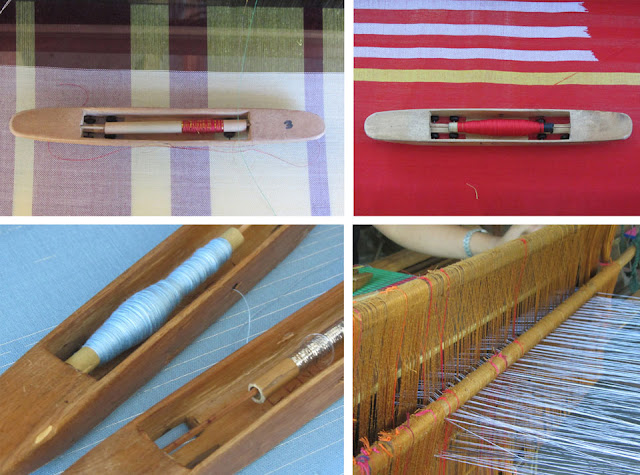Here's how WV can be globally competitive
Amid concerns on whether or not the country is ready to compete with its ASEAN neighbors in 2015 when the ASEAN Free Trade Area (AFTA) takes effect, an Ilonggo businessman shares how Western Visayas can contribute to the country’s capability to do so.
“First, audit the environment, map the strengths and weaknesses of the region against threats and opportunities of neighboring countries and use these for business planning,” said Terence Uygongco, vice chairman of the Iloilo Business Club, sharing an article by Junie del Mundo of Management Association of the Philippines.
Uygongco cited Malaysia’s experience wherein the country has learned to accept that rice production has no comparative advantage inefficient production thus they shifted from 90% rice sufficiency to 65% of the country’s needs. Then, they ventured into palm oil production and became the biggest producer.
Uygongco cited Malaysia’s experience wherein the country has learned to accept that rice production has no comparative advantage inefficient production thus they shifted from 90% rice sufficiency to 65% of the country’s needs. Then, they ventured into palm oil production and became the biggest producer.
“There should be government direction as to what we can and cannot do,” he said.
“Second is the Brand. Strengthen the Brand and align it to what the market needs. Third, we must Communicate. Engage the stakeholders at a proper time and venues. Let them know what we can offer,” he said.
“Fourth is to Market. A cheaper way is to exploit social media. There are seminars and programs that teach the use of social media for marketing,” he said.
He admitted that social media use for marketing by Ilonggo businesses is still in the infancy stage.
“But it is very easy to reach people through social media,” he said. A World Startup Report indicates that Social Media Penetration is 83% in the Philippines as compared to 49% in the USA.
“Fifth, people will look for affordable and quality products. We need to Innovate to be relevant. Make sure that products and services are applicable to the different cultural regions,” Uygongco further said.
“Sixth, the government should build more economic infrastructures,” he said.
He cited the construction of the Jalaur dam in Calinog, Iloilo as an example. “This can irritate an aggregate 31,840 hectares of farmlands. It will also be a source of potable water for the province and can eliminate flooding in the city,” he said.
He also commended the construction of the Iloilo Convention Center and addition of circumferential highways within the province.
He also encouraged (1) public and private investments in order to strengthen the industries and to create better opportunities for the region, (2) improve the competitiveness of the local government units and (3) convergence of the programs of government agencies in order for them to deliver better service.
If the region is prepared, Uygongco said the opportunities open for us in ASEAN Countries are; a bigger market composed of 600 million consumers, free flow of goods and services and the tariff will be as low as 0 to 5 percent.
FOCUS ON AGRICULTURE
Meanwhile, Uygongco admitted that while the region is agricultural-based, the sector has been stagnating since 2009 until the present, based on data from the National Statistical Coordination Board (NSCB).
“The service sector is the one that propels the economy in the region as well as the country now as it has been growing since the 80s,” he said.
This makes Western Visayas the top 5 contributor in the Philippine economy in 2011. Western Visayas also tops the fastest growing region in Agriculture, Hunting, Forestry & Fishing (AHFF) Sector in 2011.
And since the region has fertile plains, rich inland, and marine resources, there should be a focus on agriculture.
However, he said our farmers are faced with several challenges, which are as follows: (1) Little or inadequate land preparation. Some farmers still rely on carabaos and these animals can’t break the bottom pan that roots need to extend, (2) Non-investment in quality high-yielding varieties seeds (3) Reduced application of needed nutrients, (4), High post-harvest losses due to lack of investment in post-harvest facilities, (5) No economies of scale, (6) No access to credit, thus farmers are at the mercy of financiers who charge higher interest rates and (7) No value adding on the products.
Uygongco said not all farmers are investing in mechanization as the capital investment needed are not cheap.
For example, “A set of tractor and implements could cost up to P3 million. So if you need to recover the cost, you need to have a bigger track of land to serve. To solve this, we need to group the lands together. Other countries have long rectangular fields so that the tractors can maximize the run before turning around,” he said.
Meanwhile, he advised small farmers to engage in block farming, which the sugar industry has already started, so that they, too can compete.
“The government encourages farmers to do block farming wherein the lands are grouped together. Once grouped together, farmers also group themselves into specialized services. A group of farmers can do the cultivation, another to do the land preparations, while others can do the harvesting. This is service specialization and can be beneficial to the block as it will come out cheaper,” he concluded./Kathy Villalon





